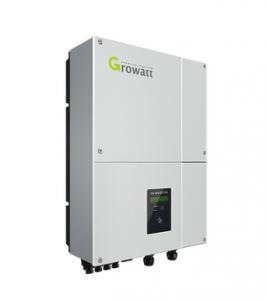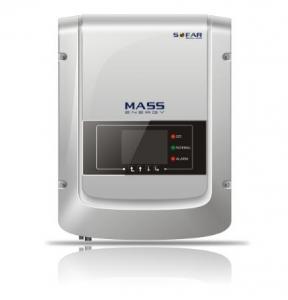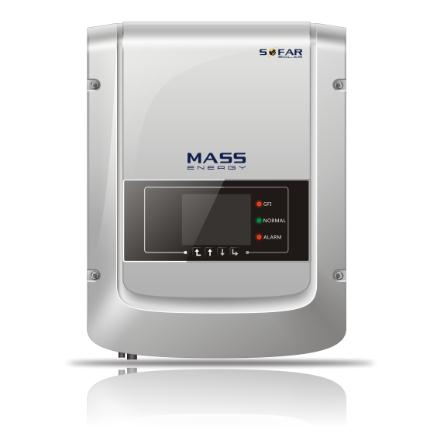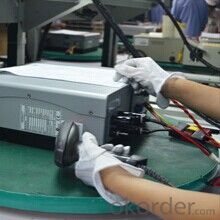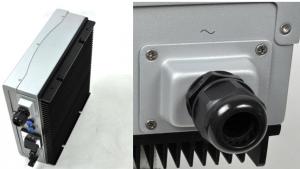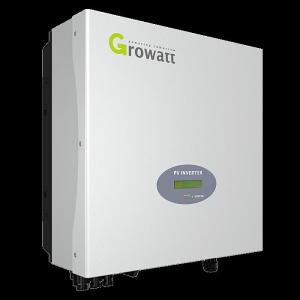Solar Inverter Charging Grid Tie PV Inverters 2700TL 2.7KW DC to AC Solar Inverter
- Loading Port:
- Shekou
- Payment Terms:
- TT or LC
- Min Order Qty:
- 10 unit
- Supply Capability:
- 99999 unit/month
OKorder Service Pledge
OKorder Financial Service
You Might Also Like
Grid Tie PV Inverters 2700TL 2.7kw DC to AC Solar Inverter
Solar inverter Datasheet
Technical Data | SOFAR 1100TL | SOFAR 1600TL | SOFAR 2200TL | SOFAR 2700TL | SOFAR 3000TL | |
Input (DC) | ||||||
Max. Input Power | 1100W | 1600W | 2200W | 2700W | 3000W | |
No. of MPPT / String per MPPT | 1/1 | |||||
Max. Input voltage | 450V | 450V | 500V | 500V | 500V | |
Max. Input Voltage | 80V | |||||
Rated input voltage | 360V | |||||
Operating input voltage range | 90V-400V | 100V-480V | ||||
MPPT voltage range | 110V-380V | 165V-380V | 170-450V | 210-450V | 230V-450V | |
Max. Input current per MPPT | 10A | 13A | ||||
Input short circuit current per MPPT | 12A | 15A | ||||
Output(AC) | ||||||
Rated power(@230V,50Hz) | 1000VA | 1500VA | 2000VA | 2500VA | 2800VA | |
Max. AC power | 1000VA | 1500VA | 2000VA | 2500VA | 2800VA | |
Max. AC Output Current | 4.5A | 7A | 9.5A | 11.5A | 13A | |
Rated Grid Voltage | 230V | |||||
Nominal Grid Voltage Range | 180V-270V(According to local standard) | |||||
Rated Frequency | 50Hz / 60Hz | |||||
Grid frequency Range | 44~55 / 54~66Hz(According to local standard) | |||||
THDi | <3% | |||||
Power factor Adjustable Range | 0.8 over excited … 0.8 under excited | |||||
Grid connection | Single phase | |||||
Efficiency | ||||||
Max. efficiency | 97% | 97.1% | ||||
Weighted eff.(EU/CEC) | 96% | 96.2% | 96.3% | |||
MPPT efficiency | >99.5% | |||||
Standard | ||||||
EMC | EN 61000-6-1, EN 61000-6-2, EN 61000-6-3, EN 61000-6-4 | |||||
RSSR | IEC 62109-1, IEC 62109-2 | |||||
Grid Standards | AS4777, VDE4105, C10-C11, G83/G59 (more available on request) | |||||
Protection | ||||||
Anti-Islanding Protection | Yes | |||||
DC reverse polarity protection | Yes | |||||
Over Temp Protection | Yes | |||||
Leakage Current Protection | Yes | |||||
Over Voltage Protection | Yes | |||||
Over Current Protection | Yes | |||||
Earth Fault Protection | Yes | |||||
Communication | ||||||
Standard Communication Mode | Wifi+RS485 | |||||
Operation Data Storage | 25 years | |||||
Relay | Yes | |||||
I/O | Yes | |||||
General data | ||||||
DC Switch | optional | |||||
Ambient temperature range | -25℃ ~ +60℃ | |||||
Topology | Transformerless | |||||
Cooling | Nature | |||||
Allowable relative humidity range | 0 ~ 95% no condensing | |||||
Max. Operating Altitude | 2000m | |||||
Noise | <35dB @1m | |||||
Degree of Protection (per IEC 60529) | IP65 | |||||
Dimension | 400*310*130mm | |||||
Weight | 11kg | 12kg | ||||
Self-consumption at night | 0 | |||||
Display | Graphic display | |||||
Warranty | 5 years | |||||
Inverter Advantages Introduction:
High-yield
•Max 97.1%efficiency
•Real timeprecise MPPT algorithm for max harvest
•Wide inputvoltage operation range from 90V to 500V
2.7kw DC to AC Solar Inverter
Flexible and economicalsystem solution
•Free siteselection due to IP65
•Easy installationand maintenance due to “Plug & Play” connection
•Interfaceselection-Wi-Fi/ RS485 / Dry Relay for more flexible
•configurationandsystem monitoring
•4” LCDdisplay
2.7kw DC to AC Solar Inverter Low maintenance cost
•Rust-freealuminumcovers
•Flexiblemonitoring solution
•Multifunctionrelay can be configured to show various inverter information
Intelligent gridmanagement
•Reactivepowercapability
•Self powerreduce when over frequency
•Remoteactive/reactivepower limit control
Packing information:
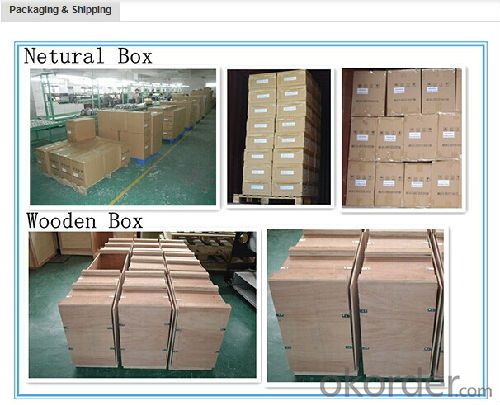
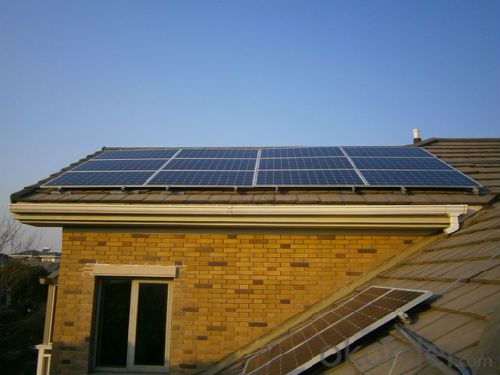
- Q: How does a solar inverter handle power surges or fluctuations?
- A solar inverter handles power surges or fluctuations by employing various protective mechanisms. It typically incorporates surge protection devices, such as varistors or metal-oxide varistors (MOVs), to absorb and redirect high voltage spikes caused by power surges. Additionally, inverter designs may include capacitors that help smooth out voltage fluctuations and stabilize the power output. These protective features ensure that the solar inverter can effectively handle power surges or fluctuations, safeguarding the system's integrity and preventing any damage to connected devices.
- Q: Can a solar inverter be used with a solar tracker system?
- Yes, a solar inverter can be used with a solar tracker system. The solar inverter is responsible for converting the direct current (DC) generated by the solar panels into alternating current (AC) that can be used to power electrical devices. The solar tracker system, on the other hand, adjusts the position of the solar panels to maximize sunlight exposure throughout the day. Both systems work together to optimize the efficiency and output of the solar power system.
- Q: What is the role of a solar inverter in maximizing solar panel output?
- The role of a solar inverter in maximizing solar panel output is to convert the direct current (DC) generated by the solar panels into alternating current (AC) which can be used to power electrical devices in homes or businesses. The inverter ensures that the AC output is synchronized with the grid's frequency and voltage, allowing for efficient and effective utilization of solar energy. Additionally, the inverter also helps in monitoring and optimizing the performance of the solar panels, ensuring that they operate at their maximum efficiency and produce the highest possible output.
- Q: Are there any safety concerns with solar inverters?
- Yes, there are some safety concerns with solar inverters. These concerns mainly revolve around electrical safety and fire hazards. Solar inverters handle high voltage DC electricity and convert it into AC electricity, which can pose a risk of electric shock if not installed or maintained properly. Additionally, faulty or poorly designed inverters may overheat or catch fire, potentially endangering the surrounding area. It is crucial to ensure that solar inverters meet the necessary safety standards and are installed by qualified professionals to mitigate these risks.
- Q: Does a solar inverter require any additional cooling or ventilation?
- Yes, a solar inverter typically requires additional cooling or ventilation. This is because the inverter converts the direct current (DC) generated by solar panels into alternating current (AC) that can be used to power household appliances. During this conversion process, the inverter generates heat, and to maintain optimal performance and prevent overheating, it requires proper cooling or ventilation mechanisms.
- Q: What is the maximum number of parallel inverters that can be installed in a solar system?
- The maximum number of parallel inverters that can be installed in a solar system depends on various factors such as the capacity of the system, voltage limitations, and the specific requirements of the inverters being used. However, in general, there is no hard limit on the number of parallel inverters that can be installed as long as they are properly designed, coordinated, and meet the system's electrical specifications and safety standards.
- Q: What are the key features to consider when choosing a solar inverter?
- When choosing a solar inverter, there are several key features to consider. Firstly, the power rating or capacity of the inverter should match the size of your solar panel system to ensure efficient energy conversion. Additionally, the efficiency rating of the inverter is important as it determines how much energy is lost during the conversion process. It is also crucial to look for an inverter with reliable and durable components to ensure long-term performance and minimize maintenance costs. Other important features include the presence of monitoring capabilities, such as data logging and remote monitoring, which allow you to track the performance of your solar system. Finally, considering the warranty and customer support offered by the manufacturer is essential to ensure adequate support and protection for your investment.
- Q: What is the role of a solar inverter in maintaining system stability?
- The role of a solar inverter in maintaining system stability is to convert the direct current (DC) electricity generated by solar panels into alternating current (AC) electricity that can be used in homes or fed back into the electrical grid. The inverter also ensures that the output voltage and frequency of the AC electricity are within acceptable limits, allowing for seamless integration with the existing power grid. By regulating and stabilizing the electricity flow, the solar inverter helps maintain the overall stability and reliability of the solar power system.
- Q: What is the temperature range for optimal operation of a solar inverter?
- The temperature range for optimal operation of a solar inverter typically falls between 0°C (32°F) to 40°C (104°F).
- Q: What is the maximum AC power output of a solar inverter?
- The maximum AC power output of a solar inverter varies depending on the specific model and capacity. It can range from a few hundred watts for small residential inverters to several megawatts for large commercial or utility-scale inverters.
Send your message to us
Solar Inverter Charging Grid Tie PV Inverters 2700TL 2.7KW DC to AC Solar Inverter
- Loading Port:
- Shekou
- Payment Terms:
- TT or LC
- Min Order Qty:
- 10 unit
- Supply Capability:
- 99999 unit/month
OKorder Service Pledge
OKorder Financial Service
Similar products
Hot products
Hot Searches
Related keywords
